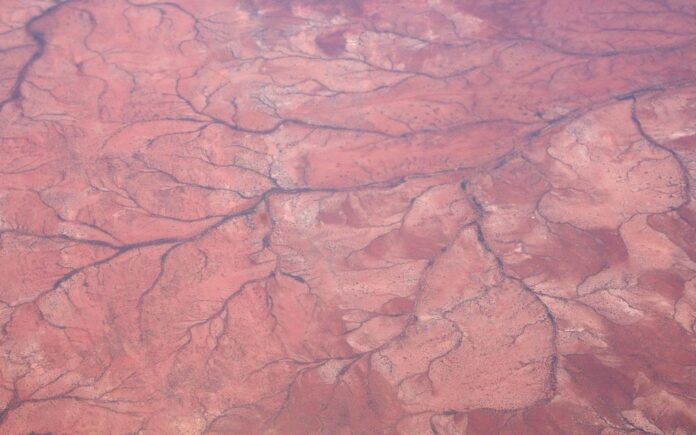World’s Oldest Impact Crater Unearthed in Pilbara, Rewriting the Story of Early Earth
In a discovery that promises to reshape our understanding of early planetary evolution, researchers from Curtin University and the Geological Survey of Western Australia have identified what is now confirmed as the world’s oldest meteorite impact crater. Hidden within the ancient rock layers of the North Pole Dome in the Pilbara, Western Australia, this crater dates back an astonishing 3.5 billion years – a full 1.3 billion years older than the previous record-holder. For scientists and locals alike, the finding offers fresh insights into how our planet’s crust formed and how life may have taken hold in the wake of cosmic cataclysms.
A Window into a Violent Past
The Pilbara region, long celebrated for its well-preserved geological records and ancient stromatolites, now holds yet another secret. Approximately 40 kilometres west of Marble Bar, the impact site displays distinctive shock-induced formations known as shatter cones – rock features that only develop under the extreme pressures of a meteorite’s collision. These formations act as geological fingerprints, unmistakably pointing to an event of massive energy release. At speeds estimated to have exceeded 36,000 km per hour, the meteorite’s encounter with the young Earth would have produced a crater spanning over 100 kilometres across, hurling debris high into the atmosphere and potentially influencing global conditions.
“This discovery fundamentally challenges our previous assumptions about the frequency and influence of meteorite impacts in Earth’s earliest history,” explains Professor Tim Johnson from Curtin University’s School of Earth and Planetary Sciences. Until now, Earth’s ancient impact record appeared surprisingly barren, with the youngest known crater from billions of years ago. This new evidence shifts that perspective, suggesting that large-scale impact events were not only common but might also have played a pivotal role in shaping early continental structures.
Rewriting Earth’s Crust Formation Narrative
The immense energy released by the impact likely had profound consequences for the nascent Earth. The collision is believed to have disturbed the delicate balance of the early crust, possibly acting as a catalyst for significant geological processes. Professor Chris Kirkland, also a co-lead author from Curtin University, believes that such events may have driven the formation of cratons—the stable, ancient cores around which continents eventually formed. In a planet where tectonic activities were still in their infancy, the force of a meteorite impact could have provided the necessary conditions for magma to rise from deep within the mantle, contributing to transformative crustal reorganisation.
Moreover, the thermal energy generated by the impact might have created localised hot water systems. These hydrothermal environments, akin to modern-day hot springs, are considered fertile conditions for microbial life to emerge. The possibility that such an environment provided a cradle for early life adds an astrobiological dimension to the discovery – linking a dramatic cosmic event with the humble origins of biological processes that would eventually lead to complex ecosystems.
Pilbara’s Enduring Geological Legacy
The significance of the Pilbara region is well known among geologists – its rock formations offer a rare window into the Paleoarchean era when the Earth was a radically different place. That these ancient impact features have survived billions of years with minimal tectonic overprinting underscores Western Australia’s importance as a global repository of early Earth history. Researchers are now keen to explore whether other such ancient craters lie hidden beneath the surface, waiting to illuminate further chapters of our planet’s formative years.
Beyond its academic allure, this discovery has practical implications for the local community. The Pilbara has long been associated with mining and resource extraction, but understanding the deep geological past of the area can also enhance exploration strategies. Shock metamorphic features similar to shatter cones are sometimes associated with mineral-rich deposits, offering potential clues that could inform future geological surveys.
The Global Context of an Australian Discovery
Internationally, ancient impact craters have been identified on the Moon and Mars, but Earth’s own record has been elusive, largely due to the dynamic nature of its surface. Compared with younger impact sites such as the 2-billion-year-old Vredefort structure in South Africa, the newfound Pilbara crater stands apart in both age and the insights it provides. While craters on extraterrestrial bodies offer clues about solar system evolution, our planet’s hidden impact record is critical for understanding the interplay between cosmic events and geodynamic processes.
This discovery invites comparisons with international research efforts. For example, studies on lunar cratering have long helped scientists deduce the bombardment history of the inner solar system. Now, armed with evidence of a 3.5-billion-year-old terrestrial impact, researchers are re-examining models of early Earth dynamics to reconcile these ancient events with the broader narrative of planetary evolution.
Curtin University at the Forefront
Curtin University has steadily built a reputation as a centre of excellence in geosciences and planetary research. The collaboration with the Geological Survey of Western Australia has not only bolstered the institution’s scientific portfolio but also underscored Perth’s emerging status as a hub for groundbreaking research. Combining state-of-the-art field techniques with advanced analytical methods and supercomputing simulations, the research team is set to continue exploring the implications of this discovery. Educational programmes are already being updated to integrate these new insights, ensuring that the next generation of Western Australian scientists is well-equipped to investigate our planet’s deep past.
Future Directions and Community Engagement
While the primary focus of the current study was the identification and analysis of the impact crater, the implications stretch far into future research. By shedding light on how the early Earth’s crust was moulded by extraterrestrial impacts, the findings open up new lines of enquiry regarding the environmental conditions that may have fostered microbial life. Ongoing field studies aim to correlate impact-altered rock formations with ancient hydrothermal systems, potentially bridging the gap between catastrophic events and the origins of life.
The local community stands to benefit significantly from these academic advances. Interpretive centres and museum exhibits in Perth and regional towns may soon display replicas of shatter cones and interactive simulations of early Earth impacts, bringing this remote chapter of cosmic history closer to home. Such initiatives not only celebrate Western Australia’s rich geological heritage but also inspire public interest in science, demonstrating how local discoveries can have global significance.
A New Chapter in Earth’s History
The Pilbara crater discovery marks more than a record-breaking find on Earth’s impact ledger—it opens a fresh chapter in our understanding of the planet’s formative years. By illuminating the violent, dynamic processes that helped shape the early crust and potentially stimulated the rise of life, the study challenges long-held assumptions and sets the stage for future explorations into Earth’s deep past.
Through this remarkable new evidence from one of Australia’s most iconic regions, scientists are rewriting the story of our planet’s beginning. As researchers prepare to delve even deeper into the geological record, Western Australia once again proves itself as a place where ancient history and cutting-edge science converge, offering the world new perspectives on both our origins and our future.

